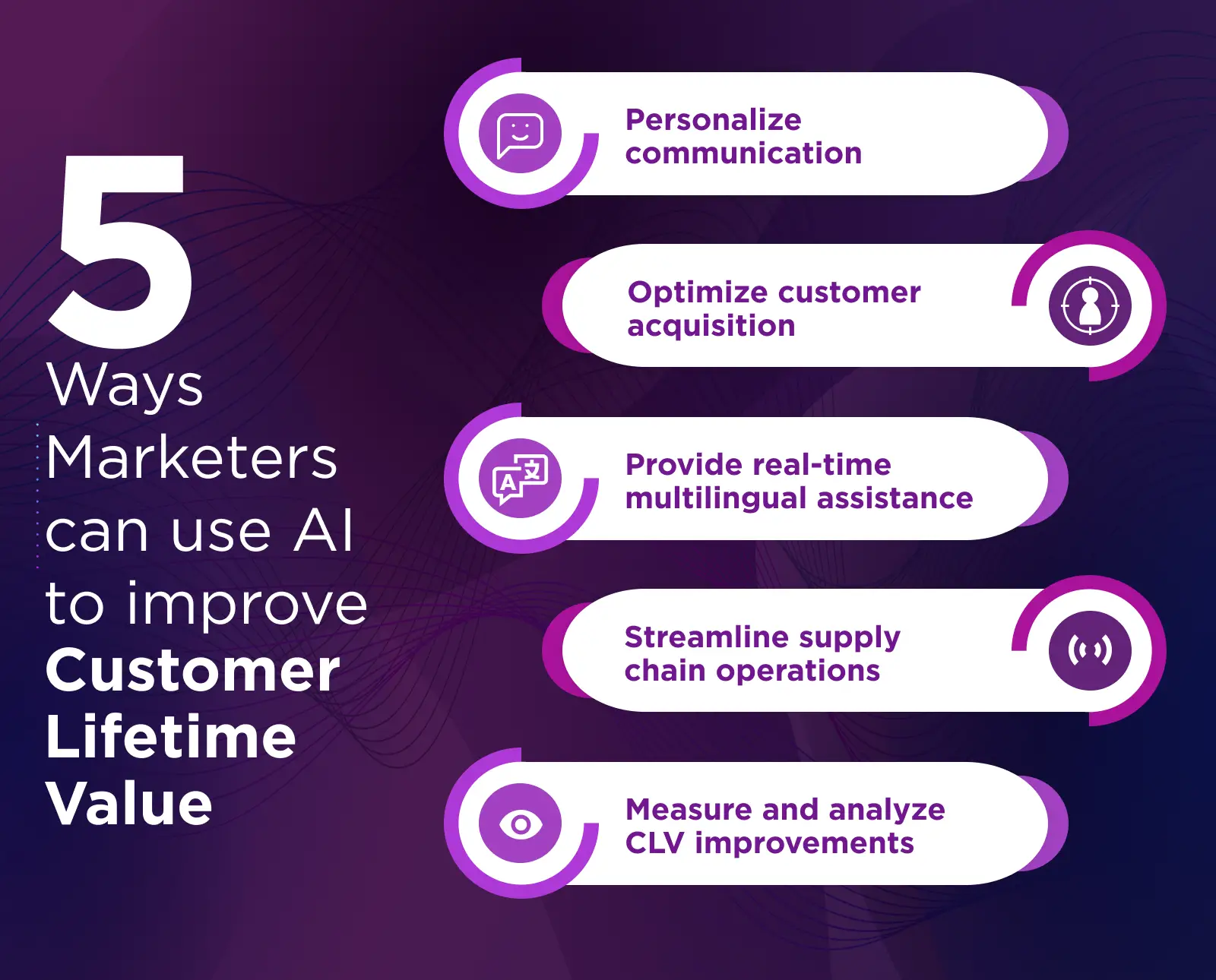The cost of acquiring a new customer can be five times higher than retaining one. A marginal increase in retention rate can increase profits multifold. Studies show that increasing the customer retention rates by 5% increases profits by 25% to 95%. Retaining customers, i.e. increasing the customer lifetime value, is one of the easiest ways for businesses to make year-on-year profits. From better engagement to personalizing communication and streamlining operations, AI can help marketers increase customer lifetime value, customer retention and, ultimately returns.
Enhancing Customer Experience
AI chatbots and virtual assistants can provide 24×7 customer service and reach as far as the internet allows, assisting customers with more prompt, round-the-clock service. Marketers eyeing a global presence can also cut down costs significantly by employing AI tools to overcome language barriers.
AI can help generate more inclusive, real-time and personalized content, increasing customer satisfaction and brand trust. AI-driven algorithms can help marketers create tailor-made content-led campaigns by analyzing browsing history, previous purchases, social media activity, etc.
Understanding Customers’ Preferences
Purchasing channels have become diverse and omnipresent. An abundance of choices can lead customers to change their preferences frequently. It is now necessary for marketers to employ AI tools to predict consumer needs based on behavioral data to maximise touchpoints, and target content toward their needs.
With the help of AI, an enormous amount of data can be processed more efficiently and quickly to pick influencers that cater to the same target audience as the brand. It enhances campaign effectiveness, allowing marketers to reach their target audiences while reducing the effort required to do so.
Strengthening Brand-Customer Relationships
It is imperative to provide consumers with a pleasant experience to retain them as long-term customers. An AI program can efficiently run large data sets to analyze grievances and complaints. Using these insights, marketers can address and improve the gaps. The process can also help marketers identify the incentives that entice consumers to return to the brand. For example – reward points, upselling and cross-selling. Marketers can then customize their campaigns accordingly.
Automated personalized emails or in-app social media advertising can help re-engage inactive consumers. By tracking their search history or social media activity, AI can evaluate trends in consumer preferences, create personalized content and optimize further based on user response.
Predicting Demand & Streamlining Supply
From a customer lifetime value perspective, AI can help streamline inventory management by monitoring sales and social media sentiments. AI models help improve the accuracy and efficiency of demand forecasting. As a more innovative strategy, with the help of AI tools, brands can offer dynamic offers. It helps achieve two goals:
- Moving the inventory faster: Discounts incentivize purchases. By providing discounts on slow-moving categories, brands can attract the attention of potential customers and increase sales.
- User engagement: Dynamic offers can potentially increase the interaction between the brands and the consumers. Potential consumers likely visit the brand’s socials regularly in wait for discounts to buy their desired product. By knowing the purchase patterns of these customers, marketers can effectively increase sales while strengthening and rewarding brand loyalty.
Further, it will help compile more data on consumer preferences and demographics, improving the scope of service and precision in demand forecasting.
Analyzing Customer Lifetime Value Improvements
Personalization allows marketers to conduct multiple cost-effective A/B experiments to optimize their positioning. Analyzing the characteristics of the audience-turned-paying-customer assists marketers in allocating their ad budgets to different consumer segments for maximizing profit. As data gets more complex, more sophisticated data analytics tools are needed to make informed decisions. This is where AI shows the most scope for use and evolution in marketing.
Challenges to Implementing AI
Marketers need specialized training to overcome skill gaps and harness the potential of AI completely. They should also be well-versed in the users’ concerns regarding ethics and data privacy. Keeping up with the ever-evolving legal and ethical practices and technical prowess is vital to growing the industry sustainably.
Conclusion
As business becomes multi-channel, AI is a revolutionary tool for marketers to navigate the evolving markets. Artificial Intelligence can help build customer relations and improve customer lifetime value by enhancing the customers’ experience, anticipating their needs, personalizing content, and making continuous tweaks to the strategy by closely listening to the feedback.





















